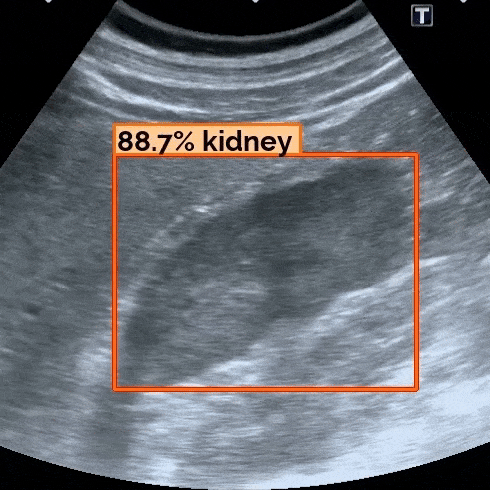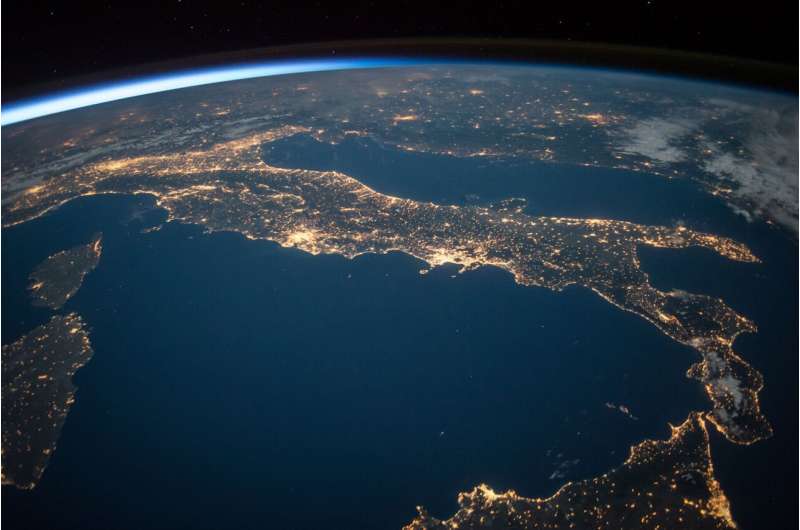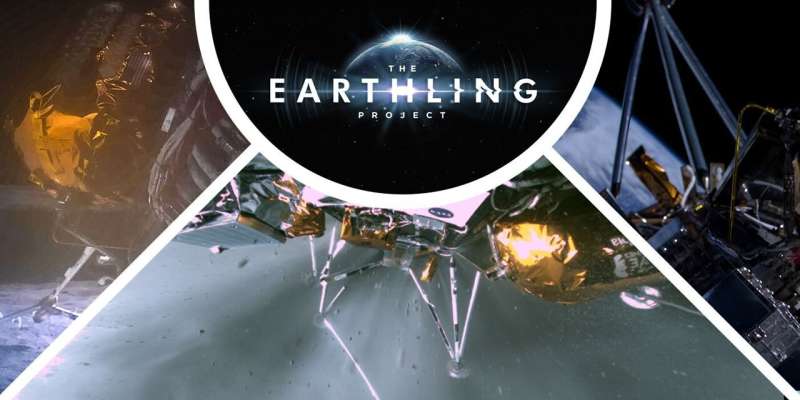
Copernical Team
New NASA astronauts graduate, eying Moon -- and Mars
 After two years of rigorous training, ten Americans officially became astronauts on Tuesday, and are now eligible for planned NASA missions to the International Space Station, the Moon, and - if all goes well - to Mars.
Two Emiratis who trained alongside them also graduated Tuesday during a ceremony at the Johnson Space Center in Houston.
Members of the class, nicknamed "The Flies," we
After two years of rigorous training, ten Americans officially became astronauts on Tuesday, and are now eligible for planned NASA missions to the International Space Station, the Moon, and - if all goes well - to Mars.
Two Emiratis who trained alongside them also graduated Tuesday during a ceremony at the Johnson Space Center in Houston.
Members of the class, nicknamed "The Flies," we Just add AI for expert astronaut ultrasound

Ultrasound devices are commonplace in modern orbital medical kits, helping to facilitate rapid diagnoses of astronaut ailments or bodily changes. However it takes real-time guidance from experts on the ground to acquire medically useful ultrasound images. Once astronauts travel to the Moon or further into the Solar System such guidance will no longer be practical due to the time delay involved. A new ESA-led project aims to leverage AI and Machine Learning so that astronauts can perform close to expert quality ultrasound exams by themselves.
Space tourists need better warnings about cosmic radiation exposure, say experts

Space weather experts at the University of Surrey are urging regulators and space tourism innovators to work together to protect their passengers and crews from the risks of space weather radiation exposure.
The Earth's atmosphere and magnetic field protect people on the ground from exposure to unpredictable surges of electrically charged particles coming from the sun. However, there can be dramatic increases in potential radiation exposure at higher altitudes, such as those envisaged for space tourist flights.
Space weather cannot yet be predicted and can lead to health risks such as damage to DNA, and it could lead to cancer. Despite this, space tourists currently receive little information and few warnings.
Chris Rees, lead author of a new paper on radiation risks to space tourism and a postgraduate researcher at Surrey Space Center, said, "Although space tourism is very niche, it will quickly grow as an industry.
Astronauts arrive at International Space Station for swap

Three US astronauts and a Russian cosmonaut arrived Tuesday at the International Space Station for a six-month mission on board the orbiting laboratory.
During their stay, in which they are rotating in to replace departing crew, some 200 scientific experiments are scheduled to be carried out.
The quartet blasted off from Florida late Sunday aboard a SpaceX Falcon 9 rocket.
The capsule docked with the ISS and its hatch was opened at 3:50 am Tuesday US eastern time (0850 GMT), with the smiling new arrivals hugging their colleagues as they entered, a live feed of the docking showed.
This is the eighth standard ISS crew rotation mission performed by SpaceX for the US space agency NASA, reflected in the mission name: Crew-8.
American Michael Barratt is the only Crew-8 astronaut to have already visited the space station. The ISS stay is the first for Americans Matthew Dominick and Jeanette Epps, and Russian Alexander Grebenkin.
They join seven crew already on board the ISS.
After a transition period of a few days, the four members of Crew-7—from Denmark, Japan, Russia and the United States—will return to Earth aboard another SpaceX capsule.
New NASA astronauts graduate, eying moon—and Mars

After two years of rigorous training, ten Americans officially became astronauts on Tuesday, and are now eligible for planned NASA missions to the International Space Station, the moon, and—if all goes well—to Mars.
Two Emiratis who trained alongside them also graduated Tuesday during a ceremony at the Johnson Space Center in Houston.
Members of the class, nicknamed "The Flies," were selected from more than 12,000 applicants in 2021 and their training included simulated spacewalking, robotics, space station systems, and more.
"You are here because you are exceptional," said NASA associate administrator Jim Free. We ask you to sit on the pointy end of a rocket and risk your life to advance our nation's goal to explore the unknown.
Moon lander Odysseus has a new home and brings an artistic project along for the ride

The moon lander Odysseus, known as Odie, touched down on the moon's surface on February 22, becoming the first time the U.S. has landed on the moon in more than 50 years and the first commercial moon lander to successfully land on the moon. Along with its science payload, the spacecraft also brought along a fusion of art and space exploration, SETI Institute's Artist in Residence (SETI AIR), Felipe Pérez Santiago's Earthling Project, a collection of global musical compositions representing Earth's cultural diversity and harmony.
Intuitive Machines built Odie, and a SpaceX Falcon 9 rocket launched it. The mission is one of several NASA contracted as part of its Commercial Lunar Payload Services (CLPS) program.
"These recent commercial missions mark the beginning of a new chapter: humanity's permanent settlement on the moon. This leap forward requires the establishment of industries and services to support the complex infrastructure needed for lunar living.
Ariane 6 upper composite hoist
 Image:
Ariane 6 upper composite hoist
Image:
Ariane 6 upper composite hoist Australia's first orbital launch facility license awarded to Bowen Spaceport
 Australia is poised to make a giant leap in its space exploration and commercialization efforts with the green light for its first orbital launch site, the Bowen Orbital Spaceport, located in Queensland. This historic milestone comes with the approval of the country's inaugural orbital launch facility license under the Space (Launches and Returns) Act 2018, setting the stage for domestic and com
Australia is poised to make a giant leap in its space exploration and commercialization efforts with the green light for its first orbital launch site, the Bowen Orbital Spaceport, located in Queensland. This historic milestone comes with the approval of the country's inaugural orbital launch facility license under the Space (Launches and Returns) Act 2018, setting the stage for domestic and com Shenzhou 17 astronauts complete China's first in-space repair job
 In a significant milestone for China's space exploration efforts, the Shenzhou XVII mission astronauts conducted a critical repair operation during their second spacewalk at the Tiangong space station, marking the first instance of such an endeavor by Chinese astronauts.
The China Manned Space Agency confirmed that mission commander Senior Colonel Tang Hongbo and crew member Lieutenant Col
In a significant milestone for China's space exploration efforts, the Shenzhou XVII mission astronauts conducted a critical repair operation during their second spacewalk at the Tiangong space station, marking the first instance of such an endeavor by Chinese astronauts.
The China Manned Space Agency confirmed that mission commander Senior Colonel Tang Hongbo and crew member Lieutenant Col NASA's SpaceX Crew-8 mission docks with International Space Station
 A SpaceX Dragon capsule successfully docked with the International Space Station early Tuesday, more than 24 hours after it launched from the Florida coast with three American astronauts and one Russian cosmonaut onboard.
The spacecraft docked with ISS' forward-facing Harmony module at 2:28 a.m. EST.
The opening of the vehicle's hatch is expected to take less than two hours after
A SpaceX Dragon capsule successfully docked with the International Space Station early Tuesday, more than 24 hours after it launched from the Florida coast with three American astronauts and one Russian cosmonaut onboard.
The spacecraft docked with ISS' forward-facing Harmony module at 2:28 a.m. EST.
The opening of the vehicle's hatch is expected to take less than two hours after 
